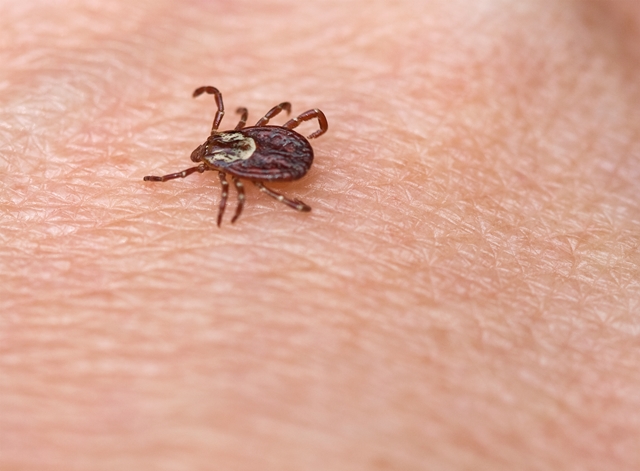From April through September, ticks are most active and pose the greatest risk of infection to humans. Those of us in the Tri-State area are in a heavily populated tick area. In fact, we have the opportunity to be exposed to the:
- American Dog Tick that may transmit Rocky Mountain Spotted Fever;
- Deer Tick that may transmit Lyme Disease;
- Brown Dog Tick that may transmit Rocky Mountain Spotted Fever; and the
- Lone Star Tick that may transmit Tularemia.
Minimizing exposure and intervening quickly when a tick is found are the best preventives of tick bite infection and disease.
7 tips to reduce your chances of tick bites
- Avoid wooded and brushy areas with high grass and leaf litter.
- Walk in the center of trails.
- Repel ticks with a repellent that is safe for you as an individual. “DEET” and “Permethrin” are popular; however, the Environmental Protection Agency can also suggest other registered repellents.
- Inspect pets daily to be certain they haven’t carried a tick inside on their fur or have a tick imbedded in their skin. Check with your veterinarian for the best way to protect your pet from ticks.
- Bathe or shower as soon as possible after coming indoors (preferably within two hours) to wash off and more easily find ticks that are crawling on you.
- Conduct a full body tick check using a hand-held or full-length mirror to view all parts of your body upon return from tick infested areas. Parents should check their children for ticks under the arms, in and around the ears, inside the belly button, behind the knees, between the legs, around the waist and especially in the hair.
- Examine gear. Ticks can ride into the home on clothing and then attach to a human later. Carefully examine coats, umbrellas and day packs. Tumble clothes in a dryer on high for an hour to kill any ticks that may have been overlooked during a visual inspection.

